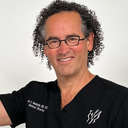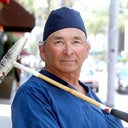I had a septo-rhinoplasty + tonsilectomy done a week ago. I saw my surgeon yesterday and mentioned that my external splint looked rather crooked, but he didn't seem to be concerned. I was getting rid of a crooked nose, so does the splint affect the outcome of the shape, or is it just for protection?
Answers (10)
From board-certified doctors and trusted medical professionals
Dr. Frank P. Fechner, MD

Dr. Frank P. Fechner, MD
Board Certified Facial Plastic Surgeon
Answer
Dr. Richard J. Bruneteau, MD

Dr. Richard J. Bruneteau, MD
Board Certified Plastic Surgeon
Answer
Dr. Rod J. Rohrich, MD

Dr. Rod J. Rohrich, MD
Board Certified Plastic Surgeon
Answer
Dr. Jon E. Mendelsohn, MD, FACS

Dr. Jon E. Mendelsohn, MD, FACS
Board Certified Facial Plastic Surgeon
Answer
Dr. C. Spencer Cochran, MD

Dr. C. Spencer Cochran, MD
Board Certified Otolaryngologist
Answer
Dr. Toby Mayer, MD

Dr. Toby Mayer, MD
Board Certified Facial Plastic Surgeon
Answer
Dr. Daniel Reichner, MD, FACS

Dr. Daniel Reichner, MD, FACS
Board Certified Plastic Surgeon
Answer
Dr. William Portuese, MD
Dr. William Portuese, MD
Board Certified Facial Plastic Surgeon
Answer
Dr. Michael A. Bogdan, MD, MBA, FACS
Dr. Michael A. Bogdan, MD, MBA, FACS
Board Certified Plastic Surgeon
Answer
Dr. Brooke R. Seckel, MD, FACS (retired)
Dr. Brooke R. Seckel, MD, FACS (retired)
Board Certified Plastic Surgeon
Answer
More Rhinoplasty Questions
See all Rhinoplasty Q&AWE SEND PRETTY
EMAILS
What’s trending? Who’s turning heads? Which TikTok myths need busting? We’ve got you. No fluff, no gatekeeping—just real talk. Get our free, unfiltered newsletter.